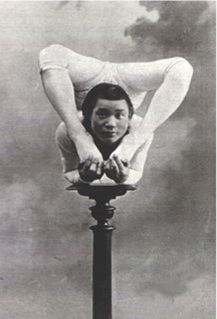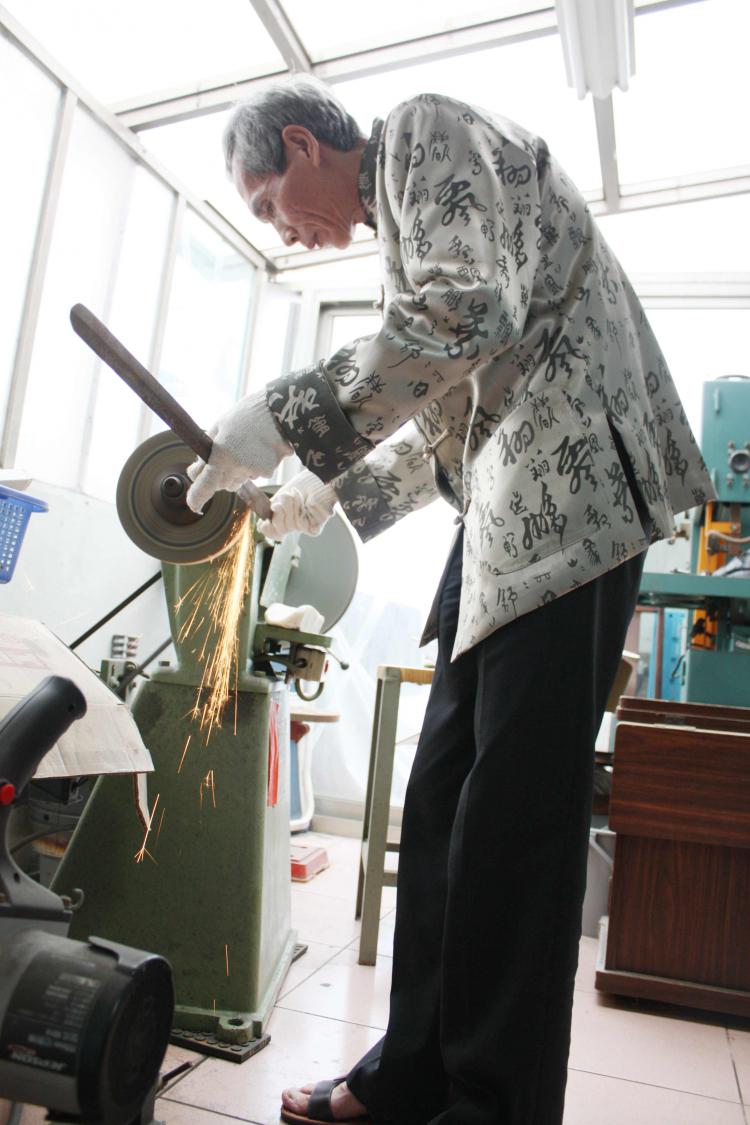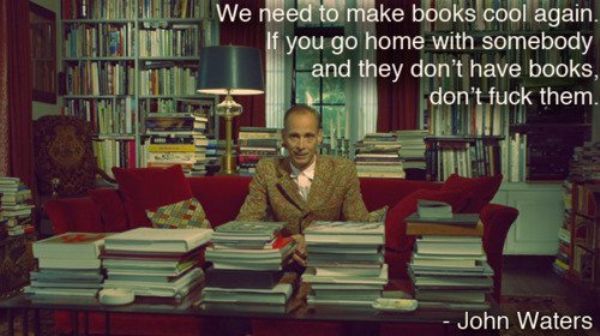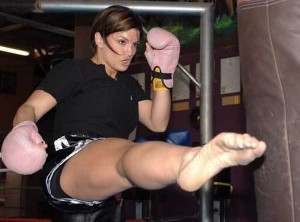A review of the film Rigor Mortis (2013) "Geung si" (original title), Director: Juno Mak Writers: Lai-yin Leung (script), Philip Yung (script) Stars: Anthony Chan, Siu-Ho Chin, Fat Chung
I watched Rigor Mortis on the airplane on the way back from Boston last month. This film was dropped in my lap by a scholar I met at the conference named Sean Allen (His abstract is write at the top of this link). He gave a wonderful presentation on Daoism in horror films. Talking afterwards we had lots of ideas to share and I left with a list of films to see! The next day he dropped Rigor Mortis in my lap, extracting a promise that I would review it.
I think we can understand Rigor Mortis as an assertion of cultural archeology. My sense of traditional theater/opera going back 200 years or more, is that the horror-ghost-supernatural genre was very widespread, it may have even been the dominant genre. But like horror today, it isn't the art form that inspires a lot of literary intelligence. To the contrary, if it is written about at all it is often to say, "that was a scary waste of time." But some of us consider it the most creative genre in terms of costumes, props, music and sets, not to mention the most forgiving of bad acting. The horror genre is the most willing to utilize improvisation and ultimately the most willing to risk offending concerned mothers, government officials, and just about everyone else. I suspect this was true in historic China as well.
The makers of Rigor Mortis obviously had a broad knowledge of popular religion, as there are 100's of cultural artifacts in there, actually it would be fun to watch it again and count them. The whole thing can be framed as and example of the land of Millet dreams. The notion of a millet dream world is key to the cosmology of Chinese religion, it comes from a story first written down about 1500 years ago about a scholar who is struggling to start his career, he happens to meet an old Daoist in a café and falls asleep over his millet. He dreams his whole life, apparently in real time, and then wakes up with his millet still warm. You can read about it in this wonderful new complete and concise history of Chinese Literature by Sabina Knight.
by Sabina Knight.
In the film, an old apartment building becomes the location of the millet dream, which doesn't actually involve any millet, they use stir-fry instead, and begins at the end of a career not the beginning. It works well because the notion of another reality as a metaphor for where we are living our lives is ultimately and traditionally conceptualize spatially. That is, the unseen-world of ghosts, spirits, ancestors, gods, and demons is ever present, all around us, below us, above us, inside us, beside us, manoeuvring around in chaotic time tunnels. Like and old apartment building.
The basic tentative working hypotheses of Chinese exorcists when dealing with ghostly and demonic forces is that upright conduct has the capacity to lead to the complete resolution of chaotic forces. On the other hand, sex, blood, pain, and other yin substances and actions tend to draw out chaotic forces and even feed them. Thus, in this film an exorcist has to walk this line between drawing out chaotic evil and resolving it. He does this while managing another not-so-well-behaved exorcist who would like to harness some of that slimy red yin power. There are some scary monsters and basically the whole thing is about the undead, conceptualized as conflicting emotions which live on fear, lust and pain, endless loops of suffering. You know, a real family film.
Rigor Mortis doesn't actually let us know for sure whether it is a dream world imposing itself on reality or whether reality is just an illusory aspect of a dream world. Thus it posits the basic traditional-- Zhuangzi is dreaming he is a butterfly, and the butterfly is dreaming he is Zhuangzi-- Operatic framework of illusion vs. disillusion (See Sophie Volpp ).
).
At this moment in history this sort of illusion vs. disillusion art work strikes me as a comic attack on modernity and rationality. Truth isn't knowable so it isn't that important, lighten up already, it's just fake blood and special effects! When it is all over we can get back to the important work of friending and unfriending people on Facebook.
At the Daoist Conference in Boston the issue was raised that in popular film there is often label confusion between tangki or other ritual experts and Daoshi (literally: Officails of the Dao). I would suggest that this may actually reflect real anxiety about the difficulty lay people have in knowing which types of ritual experts to trust. Popular culture, documented in written plays and more recently by anthropologists of village level ritual, sometimes portrays Daoshi as wild warriors and liminal exorcists with amoral magical powers. As we learned at the conference, some groups of elite literati were comfortable using spirit writing to create new forms of Daoism. I think we are headed toward more expansive definitions of Daoism which may include illiterate but theatrically intelligent forms of Daoism.
Still there is good reason for caution about changing our definitions of Daosim. I hope the discussion continues to be framed by Clifford Gertz's ideas that we try to be a form of literature which is expert at relating what people say about themselves, and each other.
Anyway, it is a fun movie, plenty of crows blood, creepy rituals and powerful talisman--check it out!
__________________
The Natan Sharansky definition of democracy is that you can go into a public square and say what ever you want without fear of violent retribution. He specifically pointed out that an election does not signify democracy if this basic right is not being met. That perspective led to the Phillips measure of democracy (that's me), namely that one can make a horror movie. Horror movies require the freedom to express ones greatest fears and the social networks capable of bringing together economic resources and expert skills. If it hasn't made a horror movie, it isn't a democracy. For great swaths of the world it is a decent measure. There are a few exceptions that prove the rule, in the early days of film technology, governments hadn't yet figured out that horror movies could be a threat so there are a few horror movies that got under the wire in the 20's and 30's. Then there is India which simply does not make horror movies (perhaps this is because images of horror are sacred in India?). The other big exception to the Phillips rule has been Hong Kong, which has made a lot of horror movies over the years.
definition of democracy is that you can go into a public square and say what ever you want without fear of violent retribution. He specifically pointed out that an election does not signify democracy if this basic right is not being met. That perspective led to the Phillips measure of democracy (that's me), namely that one can make a horror movie. Horror movies require the freedom to express ones greatest fears and the social networks capable of bringing together economic resources and expert skills. If it hasn't made a horror movie, it isn't a democracy. For great swaths of the world it is a decent measure. There are a few exceptions that prove the rule, in the early days of film technology, governments hadn't yet figured out that horror movies could be a threat so there are a few horror movies that got under the wire in the 20's and 30's. Then there is India which simply does not make horror movies (perhaps this is because images of horror are sacred in India?). The other big exception to the Phillips rule has been Hong Kong, which has made a lot of horror movies over the years.
Hong Kong was not a democracy, but under British rule the rights of self-defense, freedom of speech, freedom of assembly, the right to a lawyer, and the right to petition the government for redress of grievances were pretty much intact. But now Hong Kong has been handed over to the Peoples Republic of China (PRC). So naturally I asked Sean Allen (who later gave me my copy of Rigor Mortis and who is an expert on Hyper Masculinity in Asian Horror), "Has Hong Kong made a horror movie since the PRC took over?" He answered that there was indeed a lull, for a few years the masters of horror were holding their breath, but in the last 3 years a number of very serious horror movies have been produced.
This is a real source of optimism for me. I am an American, I believe strongly in Democracy, but societies that protect basic contract rights, rights like self-defense, and freedom of speech can exist alongside democracies. I don't know what the future holds, but the PRC is allowing Hong Kong to make horror films and that is a reason to be optimistic. I now have a list of new horror films to see and review for my readers, as well as some older horror films that deal with Daoist priests. There is no way of knowing whether or not we are in some sort of millet dream, but as long as the horror movies keep coming, I'll pretend that we are.








 al criticism she can find to the actual situation and history of women's boxing. The result? Not a single theory is consistent with reality.
al criticism she can find to the actual situation and history of women's boxing. The result? Not a single theory is consistent with reality. Formosa Mambo
Formosa Mambo